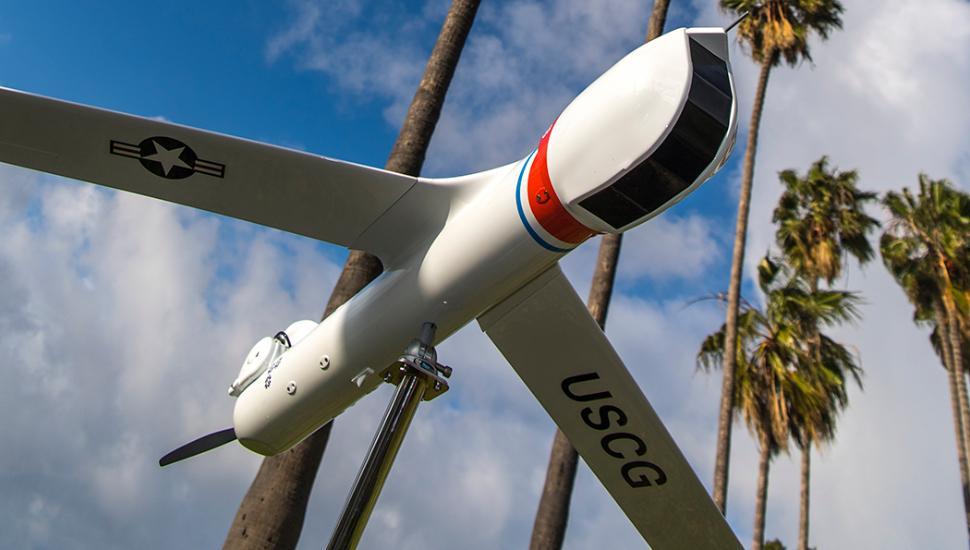Key Takeaways
- Illegal, Unreported and Unregulated (IUU) fishing is a leading global maritime security threat, and surveillance and enforcement is a top priority for the U.S. Coast Guard and partner navies.
- ScanEagle sUAS equipped with next-generation optical and AI payloads help locate, surveil and track otherwise undetectable fishing vessels during day and night and in austere conditions.
- In 2020 alone, ScanEagle was instrumental in identifying over 35 Chinese vessels illegally fishing off the coast of the Galapagos, a UNESCO World Heritage Centre.
Exclusive Economic Zone (EEZ) surveillance and enforcement has become a top priority for the U.S. Coast Guard and partner navies. Sovereign nations have the right to protect within their maritime borders the maritime resources and fisheries vital to their economic welfare, but Illegal, Unreported and Unregulated (IUU) fishing is threatening the health of fish stocks worldwide. “IUU fishing has replaced piracy as the leading global maritime security threat. If IUU fishing continues unchecked, we can expect deterioration of fragile coastal States and increased tension among foreign-fishing Nations, threatening geo-political stability around the world,” said Admiral Karl L. Schultz, Commandant of the USCG in a review of the USCG strategy to enhance maritime security.
There has been a marked increase in IUU fishing within maritime boarders and EEZs in every ocean around the globe, with many offenders encroaching on regulations and established treaties to actively exploit natural resources, in many cases challenging the sovereignty of smaller or less developed nations. Up to 27 million tons of fish are caught illegally each year, which accounts for 20-30% of global fisheries annual catch – Defense Visual Information Distribution Services. Even by the most conservative estimates, IUU fishing accounts for more than a $23 billion annual loss to the global economy – 2020 State of the United States Coast Guard. In vulnerable countries, desperate local fishers, deprived of their normal livelihood, have little choice but to try their hand at piracy or drug and human trafficking. Widespread acceptance of criminal behavior further destabilizes the host country, causing problems for neighboring maritime law enforcement, which can, in turn, spark big geopolitical crises – Forbes.
Where does ScanEagle fit in?
The USCG and partner navies engage in regular maritime patrols of many regions around the world to enforce and deter IUU fishing activities. To enhance the effectiveness and efficiency of enforcement operations, the USCG is employing tools and techniques it developed to combat the flow of illicit drugs, including ScanEagle unmanned aircraft systems.
Finding Targets of Interest (TOI) engaging in illegal activities in maritime EEZs is greatly improved by employing ScanEagle day/night optics and ViDAR (Visual Detection and Ranging) surface search capabilities. ScanEagle sUAS serves a critical ISR role in identifying IUU fishing in ongoing EEZ patrols Joint Operations. In 2020 alone, ScanEagle was instrumental in identifying over 35 Chinese vessels illegally fishing off the coast of the Galapagos, a UNESCO World Heritage Centre. ScanEagle’s ability to expand the eyes and ears of U.S. Coast Guard ships and of partner nations helps protect vital natural resources and assures maritime sovereignty.
U.S. Coast Guard cutter Stratton Captain Bob Little highlighted the value of ScanEagle, stating:
“Our partnerships are essential, and technology like ScanEagle allows us to identify and track contacts (vessels) much farther out or locate those ‘dark targets’ – vessels not on radar or transmitting on Vessel Management System.”*
In October 2019, the Stratton transited from the Philippines to Guam, conducting seven successful high seas fisheries boardings, and ScanEagle was used to identify targets, do initial inspections using ISR, and keep a watchful eye on the teams. In the EEZs of other nations with whom the U.S. has bilateral agreements, the Coast Guard will not conduct boardings without a shiprider from that county aboard to exercise their sovereign authority. However, ScanEagle can be flown to provide visual proof and maritime domain awareness of vessels operating in the region and their activities.*
With runway independence and persistent daytime and nighttime ISR, ScanEagle sUAS provides superior maritime surface search capability for detection and monitoring in the maritime domain. The success of ScanEagle on USCG Cutters in 2017 prompted USCG Commandant Schultz to order the full National Security Cutter (NSC) fleet to deploy ScanEagle by the end of the 2020 to meet their operational need for persistent surveillance in the maritime domain. Insitu is proud to have worked closely with the USCG to meet this expedited timeline for full deployment.
ScanEagle’s advanced payload options and rapid payload integration support a wide range of missions. With cutting-edge technology such as Dual Imager, EO950, and ViDAR (autonomous maritime surface search), the ability to fly undetectable at low range with low RCS, and stable, encrypted air-to-ground communications up to 55 nm, ScanEagle delivers the ultimate flexibility in a small, affordable package. With over 1.2 million flight hours, ScanEagle is the industry’s most trusted long-endurance sUAS. Insitu’s full suite of ground-up support, training, and deployed operations, as well as tested and mature supply chains, stand behind every system we sell.


